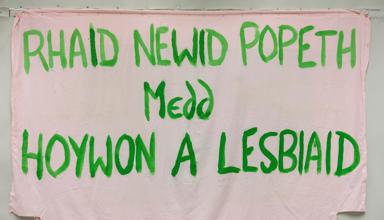Sharing good practice in scrutiny (2)
Published 07/04/2015 | Last Updated 16/12/2024
Outreach Manager Kevin Davies explains…
Welcome back! My first blog entry set the scene and explained how and why Swansea Council’s Scrutiny Committee came to visit the National Assembly for Wales to discuss ideas around public engagement in scrutiny.
In it I explained that wanted to explore ways of encouraging more people to take part in committee work, be it to help the Assembly scrutinise the work of the Welsh Government, or to help local council scrutinise the work of council leaders. We share the same challenge…sometimes we don’t hear from the variety of people would like to.
To read my first blog entry click here.
In this blog entry I’ll explain how we at the Assembly try to overcome this issue, and reference examples and case studies.
Consultation toolkit
I was really impressed by Swansea Council’s openness to ideas, and their desire to engage the public in the work they do. I appreciated some of the concerns that they had (that I'm sure every other public sector organisation shares) around having the time, effort and resource to do it properly. As a public sector organisation, this is something we at the Assembly also have to consider, and it shapes the types of activity we can offer and deliver.
A few years ago we produced our consultation toolkit (PDF 5.82MB). The toolkit is a list of engagement methods which have been used by the National Assembly and have been evaluated after use, with strengths, weaknesses suggestions of lead in times, costs and other considerations. It lists the different things the Assembly's Outreach team can deliver when helping committees find more people to take part in a consultation. The toolkit includes a lot of different options, ways of gathering people’s opinions (evidence) including things like focus groups, events, filming video interviews, web-chats and surveys.
Finding people from different backgrounds, and hearing their perspectives helps Assembly Members understand the issues and the impact they have on people’s lives. Better informed Assembly Members (or councillors for that matter) leads to better scrutiny and better policies, so the value of engaging a broader group of people in this process shouldn't be undervalued.
This video shows Rhun ap Iorwerth AM and Julie James AM talking about taking part in a web-chat with students on the subject of Science, Technology, Engineering and Mathematics Skills in Wales as part of committee scrutiny:
[youtube https://www.youtube.com/watch?v=fomBO9zuluU&w=560&h=315]
This video shows people who took part in video interviews for the Enterprise and Business Committee’s inquiry into youth entrepreneurship:
[youtube https://www.youtube.com/watch?v=UFzbPcQjrtc&w=560&h=315]
You might think that doing these things cost a lot of money. Using Google Hangouts to run web-chats is totally free. If you want to film video interviews with people in your area, an iPad will set you back about £200, which you can use to film people in high definition, and you can use an app called iMovie to edit the footage. A survey can be designed, published and promoted for little cost, using Facebook, Twitter and other channels. We have recently been promoting an inquiry into Supply Teaching in Wales through paid promoted Facebook posts which cost us £50 over the course of two weeks. This post (to date) has been shared 117 times and 39 comments made on the post.
Finding participants
Consider is who you see/work with on a day to day basis through the activities/services your organisations provide day to day. At the National Assembly we have communications staff which sees people coming into the Senedd, going into schools, colleges and youth clubs, and community groups across Wales to explain what the Assembly does and how they can get involved. We have used these interactions, things we do on a day-to-day basis, to explain issues being discussed at the National Assembly at the moment, and provide people with direct opportunities to have their say on these topics.
When we find people to take part in engagement activity for committee consultations, we regularly contact charities, voluntary organisations, representative bodies and community groups. Local councils deliver a wide variety of services to different groups of people so engaging with these existing groups could be a very quick and easy way for councils to broaden the range of people who could contribute to their scrutiny work. Something we tried for the Human Transplantation Bill inquiry was leaving leaflets at GP surgeries, targeting people with specific needs in a specific area.
Feedback
One of the areas that the crew from Swansea Council were really interested in was how we feedback to people who have contributed throughout the process. We showed some examples of how we’ve done this, such as this .
Committing to feeding back to participants is really important, or you could undo all the good work done during engagement activity by leaving people without updates on what their involvement lead to. At the Assembly we are currently looking at how we communicate with the public, particularly how we communicate the work of committees. As part of this process we will be considering how we keep people informed about the process of an inquiry they have taken part in, and what platforms (be it by using video, Storify or simply an e-mail) we should use when doing this. Piecing together the customer journey seems to be an area both Swansea Council and the National Assembly are looking at at the moment, and hopefully we can work together in doing this. Watch this space.
That seems like a good place to bring this blog entry to a close. The next entry will look at the planning process, and how this work happens behind the scenes at the Assembly to make all of these engagement opportunities possible.


